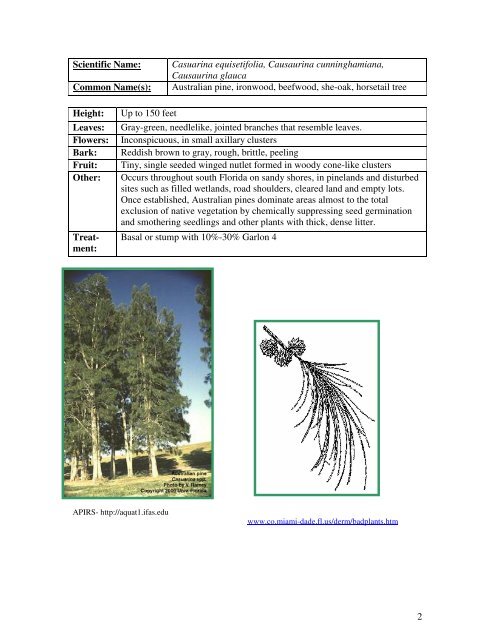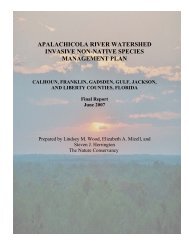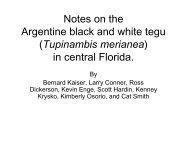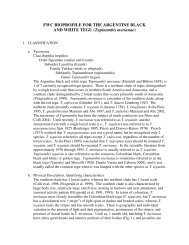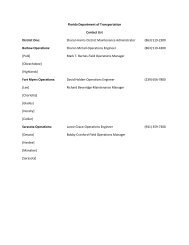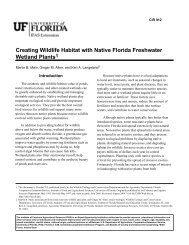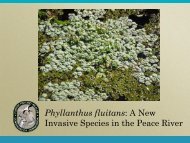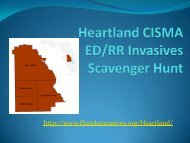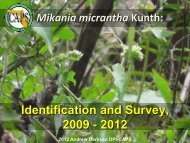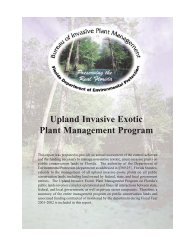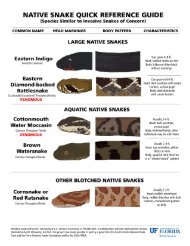Identification Guide For Invasive Exotic Plants of the Florida Keys
Identification Guide For Invasive Exotic Plants of the Florida Keys
Identification Guide For Invasive Exotic Plants of the Florida Keys
You also want an ePaper? Increase the reach of your titles
YUMPU automatically turns print PDFs into web optimized ePapers that Google loves.
Scientific Name:<br />
Common Name(s):<br />
Casuarina equisetifolia, Causaurina cunninghamiana,<br />
Causaurina glauca<br />
Australian pine, ironwood, beefwood, she-oak, horsetail tree<br />
Height:<br />
Leaves:<br />
Flowers:<br />
Bark:<br />
Fruit:<br />
O<strong>the</strong>r:<br />
Treatment:<br />
Up to 150 feet<br />
Gray-green, needlelike, jointed branches that resemble leaves.<br />
Inconspicuous, in small axillary clusters<br />
Reddish brown to gray, rough, brittle, peeling<br />
Tiny, single seeded winged nutlet formed in woody cone-like clusters<br />
Occurs throughout south <strong>Florida</strong> on sandy shores, in pinelands and disturbed<br />
sites such as filled wetlands, road shoulders, cleared land and empty lots.<br />
Once established, Australian pines dominate areas almost to <strong>the</strong> total<br />
exclusion <strong>of</strong> native vegetation by chemically suppressing seed germination<br />
and smo<strong>the</strong>ring seedlings and o<strong>the</strong>r plants with thick, dense litter.<br />
Basal or stump with 10%-30% Garlon 4<br />
APIRS- http://aquat1.ifas.edu<br />
www.co.miami-dade.fl.us/derm/badplants.htm<br />
2


